Massoud M. Engineering Thermofluids: Thermodynamics, Fluid Mechanics, and Heat Transfer
Подождите немного. Документ загружается.

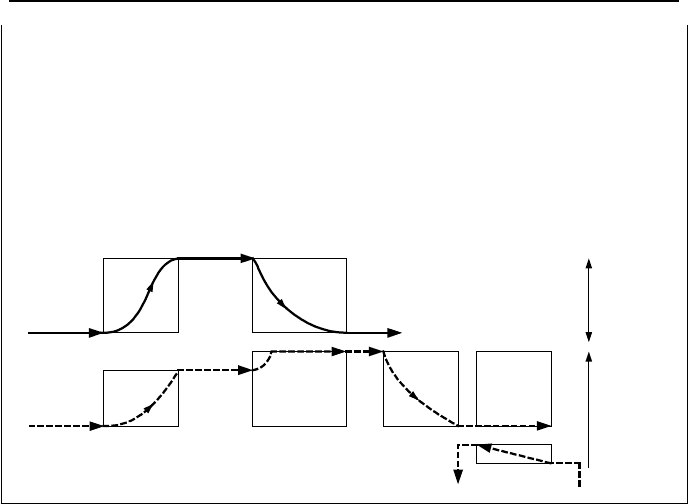
882 VIe. Applications: Nuclear Heat Generation
Hence, T
HL
≅ 600 F
– the profile of the water temperature in the average channel from Equa-
tion VIe.3.8
– steam generator inlet temperature from T
h,in
= T
HL
= 600 F
– the profile of water in the steam generator tubes from Equation VIa.6.8. Note,
T
h,o
= T
CL
= 550 F
– steam generator secondary-side inlet temperature, T
c,i
= T
FW
= 430 F.
– turbine exit temperature from the condenser pressure, T
turbine,o
= 100 F.
Condenser or
Cooling Tower
Ultimate Heat Sink
Turbine
Steam Generator
Reactor
Vessel
Feedwater Heater
To Cold
Leg
Cold Leg
Hot Leg
550 F
600 F
Primary
side
Secondary
side
Balance of
Plant
and
430 F
550 F
530 F
Feedwater
100 F
Feedwater
100 F
70 F
80 F
Steam Generator
Primary
Side
Secondary
Side
5. Shutdown Power Production
Unlike other power producing systems, nuclear reactors continue to produce
power, albeit at a much smaller rate, even after being shutdown. Power generation
in nuclear reactors following shutdown is due to two sources: the power produced
by fission caused by the delayed neutrons and the power due to
β
and
γ
decays of
radioisotopes. Power produced by delayed neutrons is short lived. It can be
calculated by solving the neutron kinetic equation with the insertion of a large
negative reactivity (–0.09). Such solution would show that the reactor power due
to delayed neutrons would decrease exponentially over a period of about 80
seconds (the half-life of the longest lived delayed neutron precursor). Hence, the
most dominant source of power following a reactor shutdown is the decay of
radioisotopes.
The rate of decay heat, as shown in Figure VIe.5.1 is generally obtained from
the models developed by the American Nuclear Society (ANS). In this figure,
ANS 1971_1 refers to the nominal value for the decay of fission products. ANS
1971_2 refers to the nominal value plus the decay of the heavy elements (U-239
and NP-239). ANS 1971_3 is the same as ANS 1971_2 but it accounts for 20%
uncertainty in the nominal and 10% uncertainty in the decay of the heavy ele-
ments. ANS 1971_4 applies 20% instead of 10% uncertainty to the decay of the
heavy elements.
ANS 1979_1 refers to the nominal value for the decay of fission products plus
the decay of the heavy elements. The ANS 1979_2 model also accounts for 2
σ
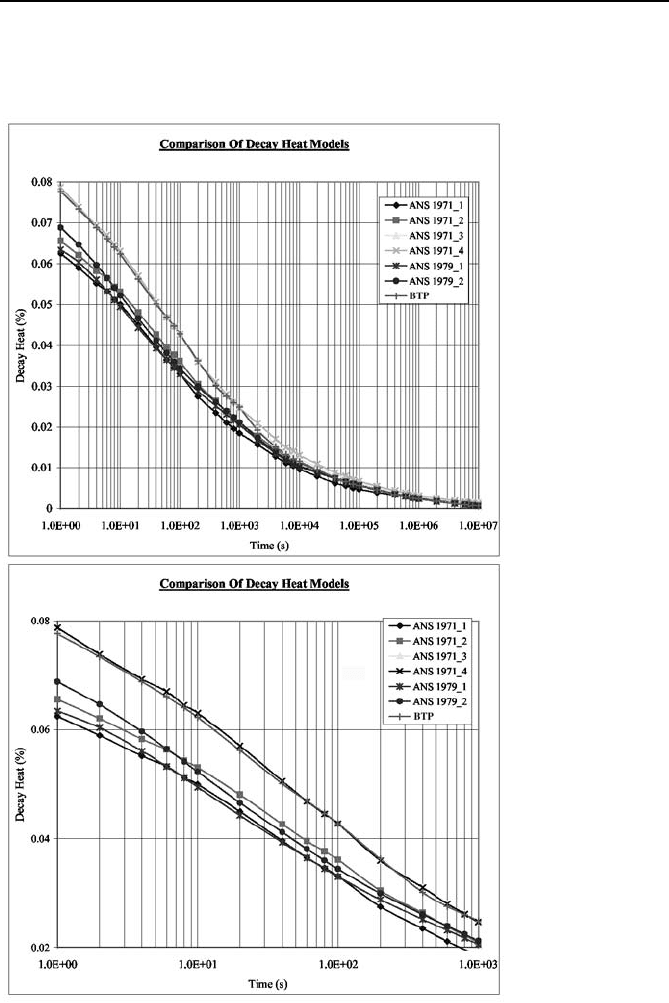
5. Shutdown Power Production 883
uncertainty. The Branch Technical Position (BTP) in this figure is similar to ANS
1971_3. To highlight the differences between these model, the bottom figure fo-
cuses on the first 1000 seconds after shutdown.
Figure VIe.5.1. Various models for the estimation of decay power

884 VIe. Applications: Nuclear Heat Generation
As shown in Figure VIe.5.1, reactor decay power following shutdown drops
rapidly in the short term (about 1000 s) and in the long term approaches zero as-
ymptotically. Obtaining a general formula for decay power is difficult due to such
factors as dependency on the fuel cycle and duration of operation (resulting in dif-
ferences in heavy nuclide concentration and their decay characteristics). See
Problem 55 for a best estimate prediction of decay heat as recommended by El-
Wakil. This correlation is applicable for time greater than 200 s after shutdown.
QUESTIONS
– What is the diameter of the chlorine atom?
– What are subatomic particles?
– What is an isotope? What are the isotopes of uranium?
– Define atomic mass unit. How much energy in MeV is associated with 1 amu?
– Explain the difference between a chemical and a nuclear reaction
– What is the abundance of the U-235 isotope in naturally occurring uranium?
– What is the process by which we increase the mass of certain isotopes in natu-
rally occurring substance?
– What is mass defect? Why is the mass of a nucleus less than the total mass of
its constituents?
– Why are heavy elements such as uranium and plutonium more amenable to fis-
sion?
– In how many ways may a neutron interact with a nucleus?
– What are the differences between elastic and inelastic scattering?
– Are microscopic and macroscopic cross sections properties of the neutron or of
the nucleus?
– What does the macroscopic cross section physically represent?
– Why do we refer to slow neutrons as thermal neutrons?
– What major assumption constitutes the basis of the diffusion equation?
– Mathematically speaking, what do temperature distribution in a rectangular
plate (Figure VIIb.2.1) and neutron flux distribution in a cylindrical core have
in common?
– Why, in an elastic scattering between a fast neutron and a nucleus, is most en-
ergy lost in collision with light nuclei than with heavier nuclei?
PROBLEMS
1. The atomic nucleus contains protons and neutrons while the electrons are orbit-
ing the nucleus on specific shells or orbits. Each shell is filled with a certain
number of electrons. The shells are identified with quantum numbers 1, 2, 3, …,
etc. The shell with the quantum number 1 is the closest orbit to the nucleus.
These are also referred to as orbits K, L, M, N, etc. Usually the shells closest to
the nucleus are filled first. The number of electrons each shell is filled is given by
2n
2
. Thus, shell K is filled with 2, shell L with 8, shell M with 18, and shell N
with 32 electrons. Electrons that orbit in the outermost shell of an atom are called

Questions and Problems 885
the valance electrons. Shown in the figure are the structure and the valance elec-
trons for hydrogen, helium, lithium, and neon. Draw similar atomic structures for
sodium, phosphorous, and xenon.
1p
e
2p
2n
3p
4n
10p
10n
2. How much energy corresponds to 1 lbm?
3. If the energy released by the Hoover dam in 2.5 days is 2.7E14 J, find the
equivalent mass associated with this amount of energy. [Ans. 3 grams].
4. Treating neutrons as a gas, we may describe the total number of neutrons per
unit volume by the Maxwellian distribution. If n(E) is the number of neutrons per
unit volume having energy E per unit energy, then n(E)dE is the number of neu-
trons per unit volume having energies in the range of E and E + dE so that:
TE
eE
T
n
En
κ
πκ
π
/2/1
2/3
)(
2
)(
−
=
where N is the total number of neutrons and T is the absolute temperature of the
medium. In this relation, ț is Boltzmann’s constant ț = 1.3806E–23 kJ/K =
8.617E –5 eV/K. Use the above information and find:
a) similar distribution for neutron velocity. [Hint: Substitute for E from the K.E.]
b) the most probable energy, the most probable velocity, and the energy corre-
sponding to the most probable velocity.
c) the average energy
[Hint: use the averaging method given by
()
³
(
)
nEdEEnE
E
/
0
= ].
[Ans.: a) E
p
=
κ
T/2, b) V
p
= (2
κ
T/m)
1/2
, and c)
E
= 3
κ
T/2].
5. Calculate the most probable neutron velocity and the neutron energy corre-
sponding to the most probable velocity. Use room temperature of 20 C. [Ans.:
V
p
= 2200 m/s, and E = 0.0253 eV].
6. Steady state neutron flux in a bare spherical reactor of radius R is approxi-
mately expressed as:
()
r
Rr
T
E
EEr
o
/sin
exp
4
),,(
π
κπ
φ
φ
¸
¹
·
¨
©
§
−=Ω
K
K
where
ϕ
o
is the maximum flux at the center of the reactor. Use Equation VIe.1.4
and the relation between energy and velocity to find the number of neutrons in the
reactor. Gamma function properties are given in Chapter VIIb. [Ans.
φ
o
(2
π
m)
1/2
(
κ
T)
3/2
R
2
].
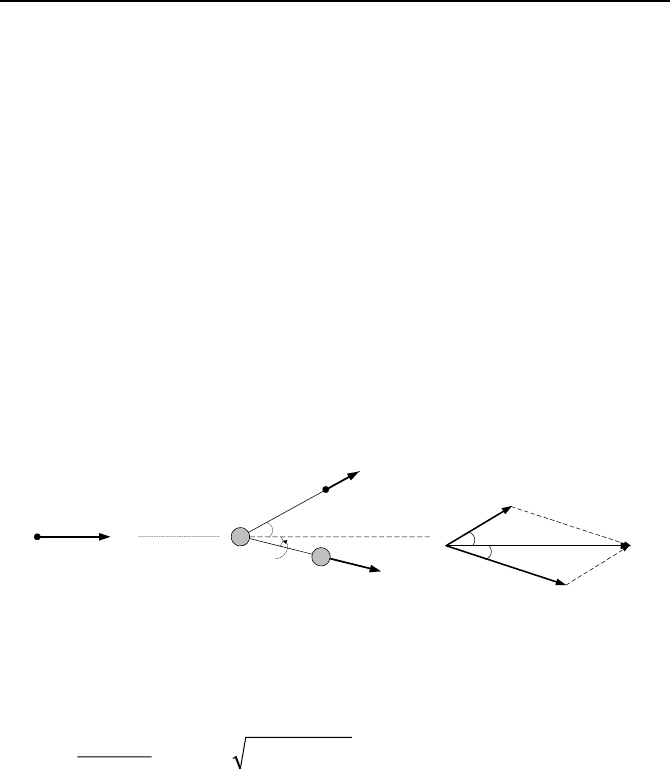
886 VIe. Applications: Nuclear Heat Generation
7. Show that the atom density of an element is given by N =
ρ
N
A
/M where N
A
is
Avogadro’s number (6.023E23) and M is the molecular weight. Find the atom
density of C-12. Use the data for scattering and absorption cross sections and find
the total macroscopic cross section of C-12. Since the mean free path is
λ
= 1/Σ,
show that C-12 is an excellent moderator.
8. Collision between neutrons and nucleus of the moderator results in slowing
down the newly born fast neutrons. Such a collision is depicted in the figure. The
striking fast neutron has an initial energy E
n
and an initial momentum p
n
. The tar-
get nucleus is initially at rest. Considering an elastic scattering, following the col-
lision, the scattered neutron has an energy of
'
n
E and momentum of
'
n
p while the
recoiling nucleus has an energy of
'
N
E and momentum of
'
N
p . Use the conserva-
tion of momentum and energy to drive a relation for energy of the scattered neu-
tron in terms of the initial neutron energy and mass number of the target nucleus.
[Hint: Find the momentum of the recoiling nucleus in terms of the momentum of
the initial and the scattered neutron. Substitute for momentum terms (p
2
= 2mE)
and for the recoiling energy from the energy balance].
Striking
Neutron
Target
Nucleus
ϕ
θ
Recoiling
Nucleus
Scattered
Neutron
N
E
′
n
E
′
n
E
N
E
n
p
′
N
p
′
n
p
ϕ
θ
p
n
n
p
′
N
p
′
9. The energy of the scattered neutron following an elastic scattering between the
neutron and the target atom is given as (note that the molecular mass of the nu-
cleus, M divided by the mass of neutron, m is M/m = A):
2
22
2
sincos
)1(
»
¼
º
«
¬
ª
−+
+
=
′
ϕϕ
A
A
E
E
n
n
Find the minimum energy of the scattered neutron following a collision with the
atom of C-12. The striking neutron has an initial energy of 5 MeV.
10. An isotropic neutron source emitting S
o
neutrons/s⋅cm
2
is located on the sur-
face of a sphere of radius R. Find a) neutron flux at the center of the sphere and b)
neutron current at the center of the sphere through a mid plane. [Ans.: S
o
/2 and
S
o
/4 downward].
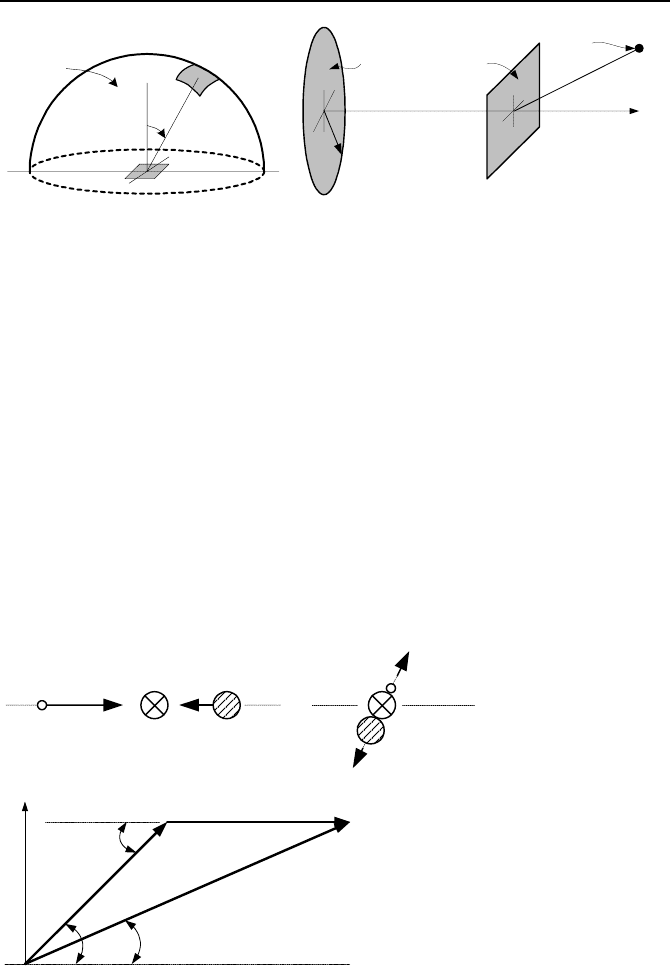
Questions and Problems 887
R
P
ϕ
S
o
S
D
S
O
P
n
δ
P
δ
D
R
Problem 10 Problem 11
11. A plane (P) is located between a disk (D) and a point source. The disk emits
S
D
particles isotropically and is located at a distance
δ
D
from plane P. The point
source emits S particles isotropically and is located at a distance
δ
P from point O
on plane P. Find neutron flux and current at point O.
12. The collision in Problems 8 and 9 is described from the point of view of a sta-
tionary observer, referred to as the laboratory (LAB) system. Now, consider a
case were the observer is instead located at the center of momentum of the neutron
and nucleus, referred to as the center of momentum (COM) system. In this case
the total momentum before and after the collision is zero. Show that the velocity
of the center of momentum (which for non-relativistic events is the same as the
center of mass) for the stationary nucleus is given by V
COM
= V
n,LAB
/(A + 1) where
V
n,LAB
is the neutron velocity in the LAB system before collision. Also show that
V
n,COM
= A V
n,LAB
/(A + 1) and V
N,COM
= – V
n,LAB
/(A + 1) where V
N,COM
is the veloc-
ity of the nucleus before the collision in the COM system.
COMN
V
,
COMn
V
,
COMN
V
,
′
COMn
V
,
′
COM
V
COM
LABn
V
,
′
COMn
V
,
′
LAB
ϕ
COM
ϕ
COM
γ
Problems 12, 13, and 15
13. Use the diagram showing neutron velocity before and after a collision to con-
clude that:
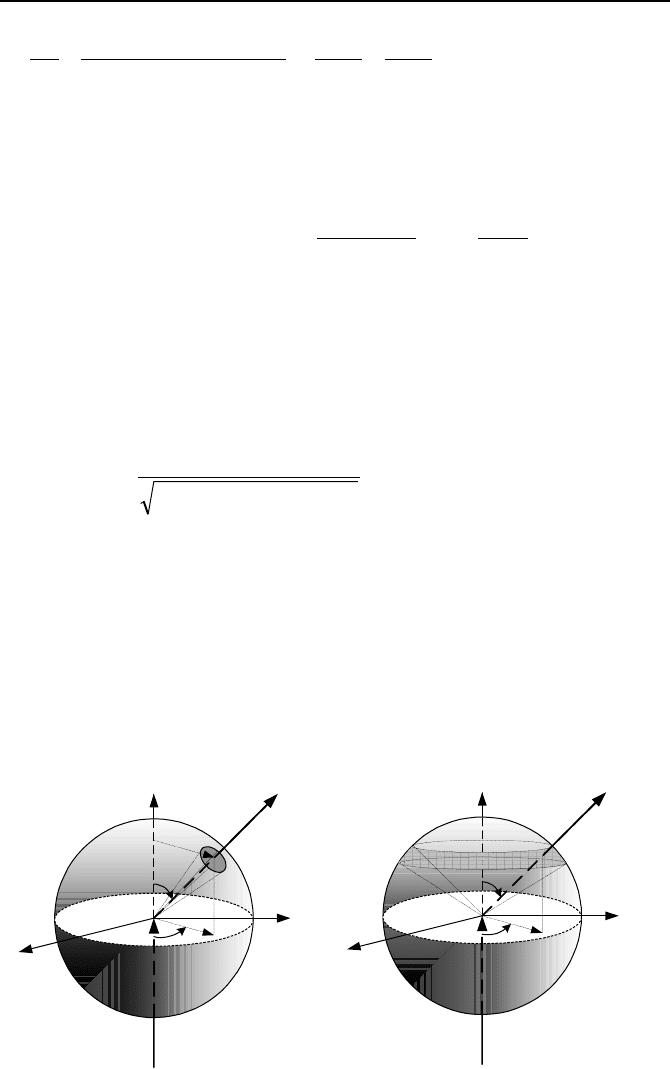
888 VIe. Applications: Nuclear Heat Generation
2
2
)1(
1)cos(2
+
++
=
′
A
AA
E
E
COM
n
n
ϕ
=
COM
ϕ
αα
cos
2
1
2
1 −
+
+
where a = [(A – 1)/(A + 1)]
2
is known as the collision parameter. Use this relation
to:
a) find the angle corresponding to the minimum energy of the emerging neutron
(
min
E
′
)
b) find
min
E
′
, the minimum energy of the emerging neutron
14. Neutron lethargy is defied as
)/ln(lnln EEEE
′
−=
′
−=
λ
. Use the result
of Problem 13 and show that neutron lethargy in terms of the nucleus mass num-
ber may be expressed as
λ
§ 2/(A + 2/3). [Hint: Finde an energy-averaged leth-
argy. The probability distribution function for elastic scattering and isotropic in
the center of mass is 1/(1 –
α)E].
15. Use the diagram to conclude that the cosine of the scattering angle in the LAB
system in terms of the cosine of the scattering angle in the COM system is given
as:
1)cos(2
)cos(
)cos(
2
++
=
COM
COM
LAB
AA
A
ϕ
ϕ
ϕ
16. Use the results of Problems 13 and 15 to plot E’/E as a function of both
ϕ
LAB
and
ϕ
COM
.
17. Consider the case of linearly anisotropic elastic scattering in the COM system
σ
s
(
µ
COM
) =
σ
0
+
σ
1
µ
COM
where
σ
0
and
σ
1
are known constants. Find and plot the
distribution of the nuclear recoil energies
18. Find the probability of isotropic scattering into a differential solid angle is
d
Ω/4
π
r
2
where the differential solid angle dΩ is given as 2
π
rsin(
ϕ
COM
)(rd
ϕ
COM
).
[Hint: Integrate over
θ
to get scattering in the segment]
ϕ
θ
x
y
z
Ω
Ω'
ϕ
θ
x
y
z
Ω
Ω'

Questions and Problems 889
19. Show that scattering in the COM system is isotropic. For this purpose, find
)cos(
COM
ϕ
and interpret the result. [Hint: Multiply the cosine of the scattering
angle in the COM by the probability of scattering and integrate from 0 to
π
].
20. Use the result of Problem 15 and the method of Problem 18 to find the cosine
of the scattering angle in the LAB system,
)cos(
LAB
ϕ
. Does the result show that
scattering in the LAB system is backward, isotropic, or forward scattering? [Ans.:
2/(3A)].
21. In Problem 13 it is shown that there is a one-to-one relation between the
change in neutron energy and the change in the scattering angle. Thus, it can be
concluded that p(E ĺ E’)dE’ = –p(
Ω ĺ Ω’)dΩ’ where p is probability and the
minus sign reflects the fact that the larger the scattering angle, the lower the en-
ergy of the scattered neutron. We represent p(
Ω ĺ Ω’) = 4π
σ
s
(Ω ĺ Ω’)/
σ
s
where
σ
s
(Ω ĺ Ω’) is the differential scattering cross section and ³
Ω’
σ
s
(Ω ĺ Ω’)dΩ’ =
σ
s
.
Use this information and find p(E ĺ E’) for an elastic scattering and isotropic in
the COM where
σ
s
(Ω ĺ Ω’)=
σ
s
/4
π
. [Ans.: p(E ĺ E’) = 1/(1 –
α
)E].
22. Use the result of Problem 21to find the average fractional energy loss in an
elastic scattering collision. The average fractional energy loss is defined as
E
∆ /E. [Ans. (1 –
α
)/2].
23. Regarding neutron-nucleus interaction, so far we dealt with elastic collision
for isotropic and anisotropic scatterings. In this problem, we want to find E’/E for
an inelastic scattering in which the target nucleus absorbs an amount of energy Q.
Use the energy equation, which now accounts for Q and the velocity diagram of
Problem 12 to show that:
2
22
)1(
1cos2
A
AA
E
E
COM
+
++
=
′
ϕξξ
;
2/1
1
1
¸
¹
·
¨
©
§
+
−=
Q
EA
A
ξ
24. Consider two groups of isotopes. Group A consisting of U-233, U-235, Pu-
239, Pu-241 and group B of Th-232, U-238, Pu-240, and Pu-242. Identify the
group that represents fissile and the group that represents fissionable nuclides.
25. Find velocity (m/s) and kinetic energy (eV) of a thermal neutron at a tempera-
ture of 500 F. [Ans.: 2964].
26. Find the temperature of a thermal neutron having energy of 0.11 eV. [Ans.:
1000 C].
27. Start with the one-group neutron diffusion equation and derive the relation for
neutron flux in a bare critical slab reactor. Find the maximum to average flux for
this reactor.
28. An isotropic surface source of S
o
neutrons/s⋅cm
2
is located on the surface of a
sphere of radius R. The sphere consists of a non-absorbing material. Find a) the
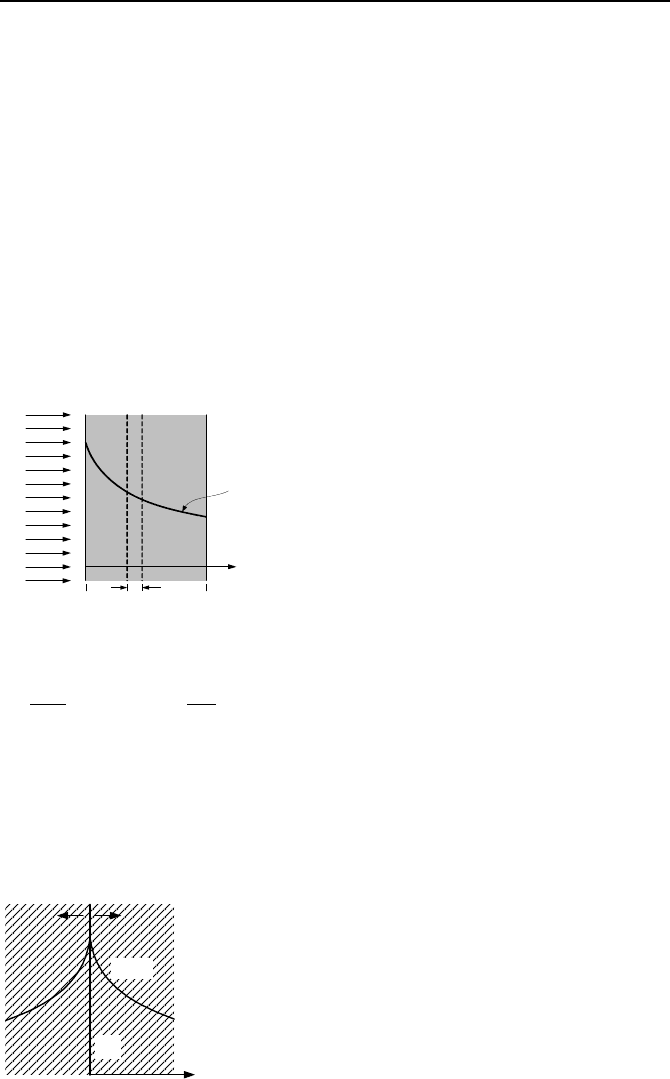
890 VIe. Applications: Nuclear Heat Generation
flux density at the center of the sphere and b) the net current of neutrons at the
center of the sphere through a mid plane. [Ans.: a) S
o
and b) 0].
29. An isotropic surface source emits S
o
neutrons/s⋅cm
2
and is distributed on the
surface of a hemisphere of radius R. The hemisphere consists of a non- absorbing
material. a) Find the flux density at the center of the hemisphere. b) Find the net
current of neutrons at the center of the hemisphere through a mid plane. [Ans.:
S
o
/2 and S
o
/4].
30. The left side of the slab shown in the figure is exposed to a monoenergetic
neutron beam of an intensity I
o
neutrons/s cm
2
. The slab material is homoge-
nously distributed and has an atom density of N atoms/cm
3
and a cross section of
σ
t for interactions with incident neutrons. Show that the neutron distribution in-
side the slab is given by I(x) = I
o
exp(-Σ
t
x) where Σ
t
= N
σ
t
. Find a) the probability
that a neutron does not have an interaction when moves a distance dx, b) the frac-
tion of neutrons without any interaction at x = L, and c) the average distance a
neutron travels before interacting with a nucleus located in dx.
x = 0
x = L
dx
I
o
I(x)
31. Show that the following integral is zero:
()
[]
µ
¶
´
µ
¶
´
µ
¶
´
=
Σ
∂
∂
=
=
∞
Σ−
π
α
π
β
βαβαβ
π
φ
2
0
0
0
0coscossin
4
drdder
x
r
so
s
32. Consider a plane neutron source emitting S
o
neutrons/s⋅cm
2
in a non-
multiplying, infinite, homogenous medium. The material of the medium has high
scattering and low absorption cross section for neutrons. Find an expression for
neutron flux in terms of D and L of the medium. [Hint: Solve Equation VIe.2.12
in the x-direction with s = 0 subject to the boundary conditions given by VIe.2.15].
[Ans.:
φ
(x) = (S
o
L/2D)e
–
|
x
|
/L
].
x
φ
(x)
S
o
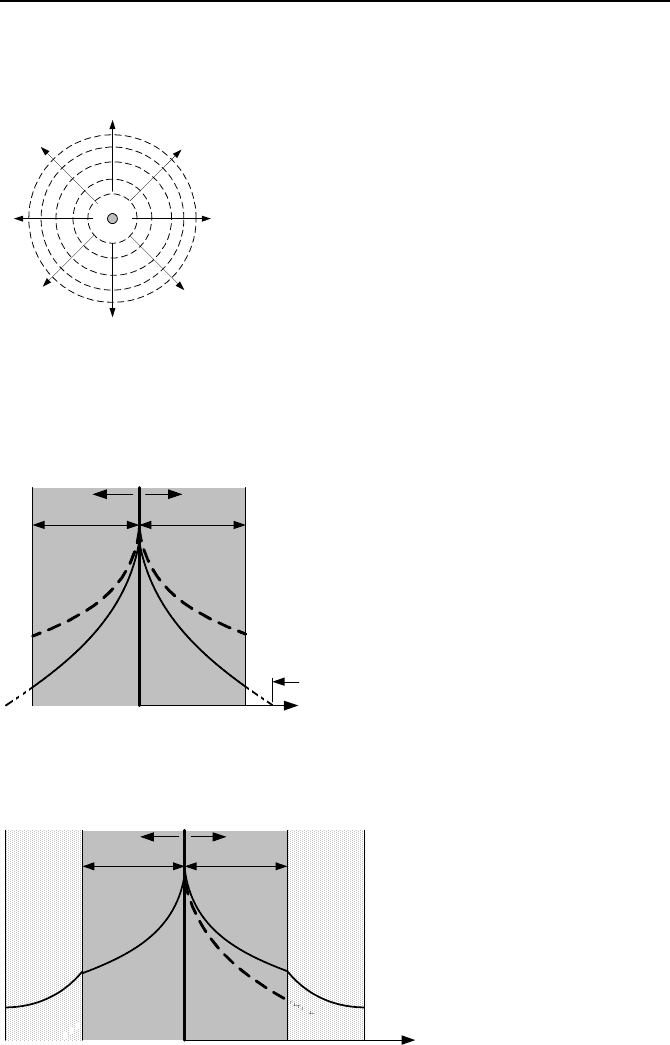
Questions and Problems 891
33. An isotropic point source emits S
o
neutrons per second in an infinite non-
multiplying weakly absorbing medium. Find neutron flux as a function of r, D,
and L of the medium. [Ans.:
φ
(x) = (S
o
/4
π
Dr)e
–r/L
].
S
o
34. A plane neutron source emitting S
o
neutrons/s⋅cm
2
is located at the center of a
non-multiplying homogenous bare slab. The material of the medium has high
scattering and low absorption cross section for neutrons. Find an expression for
the neutron flux in the slab. [Ans.:
φ
(x) = (S
o
L/2D) sinh(c
1
)/cosh(c
2
) where c
1
=
(b – 2x)/2L and c
2
= b/2L with b =
δ
+ a/2].
x
δ
I
n
f
i
n
i
t
e
m
e
d
i
u
m
F
i
ni
t
e
s
l
a
b
S
o
φ
(x)
a/2 a/2
35. The slab of Problem 32 is now placed between two slabs of weakly absorbing
materials. Find the neutron flux profile in each slab. Slab 2, which is blanketing
slab 1 is referred to as a blanket or reflector.
x
Reflector
φ
(x)
S
o
L
1
D
1
D
2
L
2
B
a
r
e
s
l
a
b
a/2a/2
1
2
